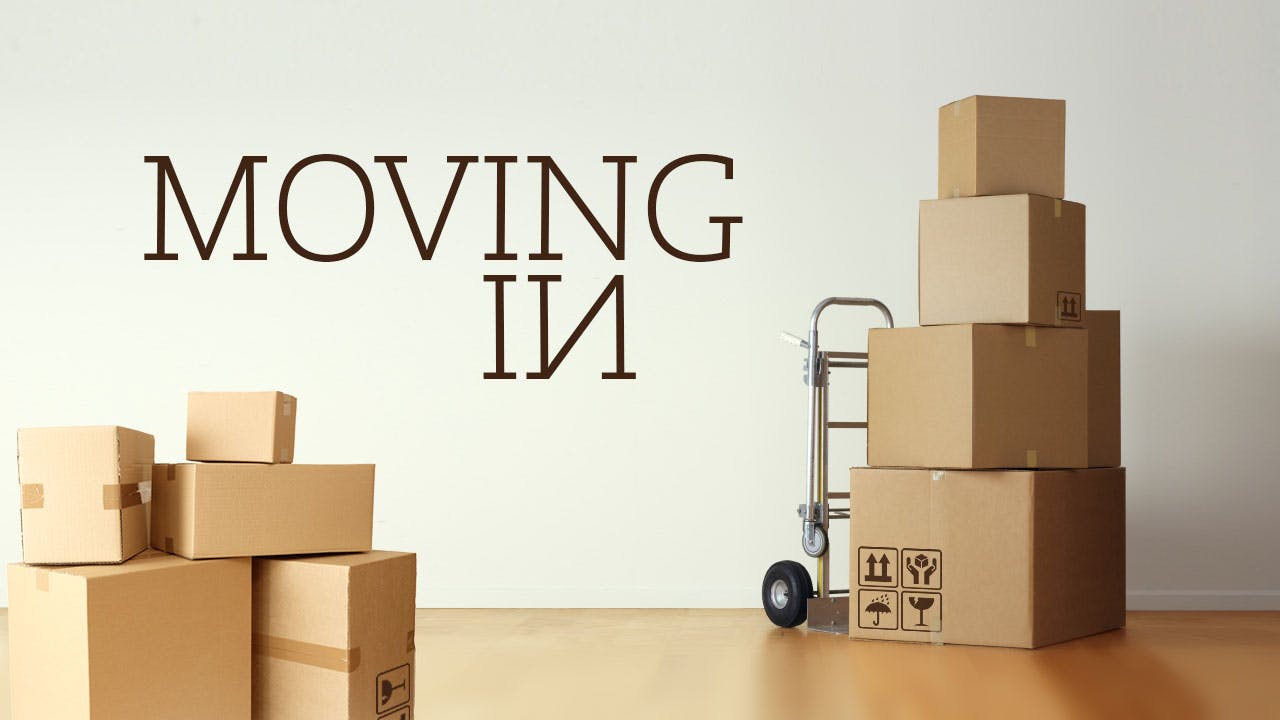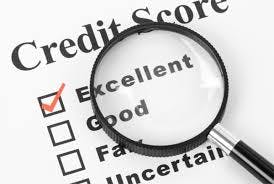Our annual Spring Social Event is coming up next month on April 27th….details to come
Blog

Home Moving Made Easy: 9 Tips for an Easier Relocation
As Canadians, we tend to move a lot. Statistics show that homeowners in the Canada sell their homes and move, on average, every five to seven years. That’s a lot of moving, and it can be a stressful time for anyone. But by preparing for your next move, you can reduce the stress involved and simplify the entire process.
Here are some tips on how to do that:
1. Gather the Right Materials
Some moving companies will come and pack up your belongings, if you pay for that service. But if you’ll be doing your own packing, you will need to gather the following supplies at a minimum:
Boxes *
Packing tape
Black markers for labeling
Newspaper or newsprint for cushioning
Scissors
Moving blankets (for high-value furniture items, mirrors, etc.)
A pocketknife or box cutter (they always come in handy)
Plastic storage bins (Rubbermaid, Sterilite, etc.)
* Check Craigslist for free moving boxes. People often give them away for free after they complete a move, just to get rid of them. Check with your local supermarket to see if they have any. You can also buy boxes (including specialty items like wardrobe boxes) from your nearest U-haul rental place.

OPEN HOUSE! “Ledgestone” by Adera in Burnaby
OPEN HOUSE! Saturday Apr 22 & Sunday Apr 23 (2-4pm)
# 71 7488 Southwynde Avenue, Burnaby, BC – $460,000
‘Ledgestone’ built by Adera, a desirable vibrant urban community surrounded by local amenities. Beautiful bright 853 sqft, 2 bedroom + den. West facing, garden level, end unit townhouse with 2 parking stalls & underground storage. New carpet, paint and dishwasher, full bathroom with his & her sinks, large walk-in closet & open concept floor plan. Large private front patio with mature plants and trees, plus additional rear patio. Close to walking trails, Taylor Park elementary school, skytrain, mall with plenty of shopping and restaurants. Pets and rentals welcome! This beautiful townhome shows well and will not last.
For more information visit: http://whitestoneselect.com/featured/71-7488-southwynde-avenue-burnaby-bc/

Open House: A modern loft in the heart of Gastown
While it’s fun to drool over million dollar listings of the finest houses that Vancouver has to offer, it can leave some with an all too real sense of emptiness in their bank accounts.
So here’s something a little more financially realistic.
This adorable—read small—apartment in the heart of Gastown is a perfect little place to live it up big in the city.
Sitting on the safer side of $1 million at a cool $599,900, it’s hardly affordable housing. But for a place that is less than a block away from The Blarney Stone, the Irish Heather, Portside Pub, MeeT in Gastown, and TACO-frickin’-FINO— that’s a win in this infamously pricey city.
Click here to read the full article

10 Things to Do After You Buy a Home
First-time home buyers are often surprised by the number of things they have to do after purchasing a home. Sometimes they are woefully unprepared as well. I believe the information void. There simply aren’t very many tutorials that cover the post-purchase part of the buying process.
Continue reading →
6 Reasons to Stage Your Home Before Letting Buyers In
Why should I bother staging my home? What do I get back for all of the time and efforts I put into it? This is one of the most common home-staging questions among sellers, especially those who are selling in a seller’s market.
Here’s the bottom line: regardless of what type of real estate market you are in, staging your home can benefit you.
In a buyer’s market, you will need every advantage you can get in order to sell your home for a decent sale price, so it’s extra important to stage your home effectively. But even in a seller’s market, staging can help you achieve a quick sale for the maximum price.
So no matter what kind of real estate market you are in, it’s always wise to stage your home for buyers.
Here are some of the primary benefits you will get out of it:
Home Staging Benefits
1. Staging forces you to organize and de-clutter. Clearing away shelves, closets and cabinets is a big part of the home staging process. It also helps with moving, because you’ll have to pack things away at some point anyway. So when you stage your home, you will also get a head start on packing to move.
2. Staging forces you to think like a buyer. When you set out to stage your home for the market, you will be looking at the home as if you were a buyer (and not the actual owner). Adopting this perspective early on will help you in many ways when preparing your home for the market.
3. Staging increases the likelihood of a sale. When selling your home, you must do everything within your power to increase the chance of a sale — and I mean everything. Professional home staging techniques can give you an extra edge in selling the home quickly.
4. Staging reduces the home’s time on the market. When you put in the extra effort to stage your home effectively, you will move closer to a quick sale. Anyone who has sold a home before can attest to the fact that the least time the home is on the market, the better. This is especially important if you will be paying two mortgages until the house sells (as is the case when you buy a new home before selling the old one).
5. Staging helps justify the asking price. If you are in a seller’s market and you price your home correctly, you probably won’t have to haggle over the asking price. But in a market that leans toward the buyer, you need everything in your favor to get top dollar. Proper home staging can help you justify the asking price by positioning the home more favorably in the buyer’s mind.
6. Staging can be fun! It may sound like all work and no play at first. Granted, you will certainly be putting some elbow grease into the process. But staging a home can be a creative process as well, and many people find they enjoy it once they’ve begun.

3 Common Mortgage Problems, and How to Avoid Them
Many problems can arise on the path to mortgage approval. Awareness is the first step to avoiding them. By understanding what can go wrong during the process, you’ll have an easier time keeping yourself on the right path. This article outlines three of the most common problems borrowers encounter during the mortgage process — and how to avoid them.
Problem #1 – Too Much Debt
When you apply for a mortgage loan, the lender will check your debt-to-income ratio. They will want to see how much money you earn compared to how much you owe. The rule of thumb is 45%. Mortgage lenders prefer that your overall debt burden is no greater than 45% of your gross monthly income. If your debt is too high in relation to your income, the lender will view you as a bigger risk. This can hurt your chances of qualifying for a loan at a good interest rate.
Possible Solutions
The solution here is simple. Reduce your debt. It may be easier said than done. But if you want to qualify for a good mortgage loan, you’ll need to have your debt under control. The ideal scenario is to keep your total debt-to-income ratio below 45%. Below 35% is even better. If you are unable to accomplish this, you could always shop for a more affordable home that would require a smaller loan. (Just note that these ratios are not set in stone. Some lenders will allow higher debt ratios for otherwise well-qualified borrowers.)
Problem #2 – Not Enough Income
If you apply for a loan that a lender thinks you can’t afford, your chances of being approved are slim. This may be a good thing, as it would prevent you from amassing more debt than you can cover with your income, which can lead to bigger problems like a foreclosure.
Possible Solutions
An obvious solution, of course, is to increase your income. But this too is easier said than done. One option would be to use a co-signer, such as a parent or other relative — somebody with good credit standing and a favourable debt-to-income ratio. Another option is to shop for a lower-priced home so that you can clear the income hurdle. (Refer to the general rules for debt-to-income ratio under problem #1 above.)
Problem #3 – Low Credit Score
Credit scores range from 300 to 900, with 900 being the highest and best. The higher your credit score, the easier it will be to qualify for a mortgage loan. You can also get a better interest rate when your credit is strong, above 800 is best. But when your credit is low, 699 and under is considered a bad score, you could have problems qualifying for a loan, and you’ll likely pay a much higher interest rate. This means a bigger mortgage payment each month. As a general rule, lenders want to see a credit score of 760 or higher for home loan approval.
Possible Solutions
The first thing to do is make sure you don’t have errors on your credit report that are dragging your score lower than it should be. Request a copy of your credit report from both Equinox and TransUnion credit reporting agencies. Check your report to make sure there aren’t any errors. If the reports are accurate, and you simply have a low credit score, you’ll have to work on improving your credit. Pay your bills on time, and try to pay off as much debt as possible. In time, this kind of financial responsibility will help you increase your credit score.
A Guide to Adjustable Rate Mortgages
Many home buyers who choose the adjustable rate mortgage (ARM) loan do it to save money during the first few years. But later, many of these same homeowners run into trouble when their ARMs adjust to higher interest rates.
In many cases, these adjustments or “resets” can greatly increase the size of the overall mortgage payment, and this catches some people off guard. In this guide, we will examine the adjustable rate mortgage in more detail. After reading this guide, you will better understand the ARM loan and when it makes sense to use one.
What Is an ARM?
An adjustable-rate mortgage differs from a fixed-rate loan in the way it adjusts to a new interest rate at some future point in time. Fixed mortgages carry the same interest rate through the entire life of the loan. So the interest rate you pay in year 1 would be the same rate as years 5, 10, 15 … all the way through the end of the loan’s term.
An adjustable-rate loan, on the other hand, has an interest rate that will change periodically. This can cause payments to go up or down, depending on the prevailing rate at the time of adjustment (and other factors).
In other words, an adjustable rate mortgage is a loan with an interest rate that changes at some point in the future. Most of the time, ARM loans start off with a lower monthly payment than a fixed rate mortgage. But keep the following points in mind:
* Unlike a fixed-rate mortgage, the payments on an ARM loan can change over time.
* You cannot predict what interest rates will be three or five years from now, when your ARM loan adjusts.
Key Ingredients of the Adjustable Rate Mortgage
To get an even better understanding of how the ARM loan works, you must understand the key ingredients of such a loan.
* Initial Rate – We have already discussed how an adjustable-rate mortgage loan starts off with a relatively low interest rate in the beginning. This is known as the initial rate, and it will stay in place for a limited period of time — usually 1 to 5 years. But here’s the thing to remember. On most ARM loans, the initial interest rate (and by extension the initial payment amount) can vary greatly from the rates and payments you would face later in the loan’s term.
* Adjustment Period – This is just what it sounds like, the period during which your adjustable-rate mortgage adjusts to a new interest rate (and payment amount). In most cases, the rate will change annually (after the initial period).
* Interest Rate Caps – Rate caps are an important concept in the world of adjustable-rate loans. A cap is just what it sounds like. It limits how much your interest rate can increase. Rate caps come in two versions: 1. Periodic adjustment caps limit how much the interest rate can go up or down from one adjustment to the next (after the first adjustment). 2. Lifetime caps limit the amount it can rise over the entire life of the loan. Lifetime caps are required by law, so you’ll find them on nearly all adjustable rate mortgage loans.
* Payment Caps – Many ARM loans also cap (or limit) the amount your monthly payment can increase at the time of each adjustment. So if your adjustable rate mortgage loan had a payment cap of 8%, your monthly payment would not increase more than 8% over your previous payment amount.
Is an adjustable-rate mortgage loan right for you? Think about your long-term plans, as well as your appetite for risk and uncertainty. You’ll find the answer within.

5 Most Common Questions Asked by First-Time Home Buyers
First-time home buyers typically have a lot of questions about the buying process. This is understandable, given the size of the investment involved. This article answers five of the most common questions asked by first-time buyers.
1. How do I determine my price range?
Determining your price range should be one of the first steps you take. Once you know how much you can comfortably afford to pay each month, you’ll be able to narrow your house-hunting process to homes that fall within your budget. This will save you a lot of time and energy.
To determine your price range, sit down and compare your monthly income to your monthly expenses (savings, credit card payments, car payment, groceries, entertainment, etc.). How much is left over each month? Your monthly mortgage payment should be less than this amount. Now you can use an online mortgage calculator to break each sale price down to a monthly amount and determine if that amount is inside or outside your comfort zone.
2. Do I need a real estate agent?
The short answer is yes. If you’re buying a first home, it’s a good idea to have a real estate agent. Buying a home is one of the biggest financial transactions you will ever make. So it makes sense to have professional help.
Your agent will help you find homes that match your price range and desired features. He or she will also help you validate the asking process (see below), prepare a purchase offer, negotiate with the seller, and navigate the rest of the home buying process.
3. How do I research the asking price?
First, you have to realize that it’s called an “asking price” for a reason. The price set by the seller is never set in stone. It’s what they are asking for, but it might not be the true market value of the home. Your real estate agent will help you validate the asking price by looking at comparable, recent sales in the area. This will tell you if the asking price is reasonable or too high, based on current marketing conditions.
4. Which type of mortgage loan should I choose?
First, do some research on the basic types of home loans — fixed rate, adjustable rate, etc.
When researching the different mortgage types, pay attention to paragraphs that begin with: “This type of mortgage might be best for you if…” Generally, this type of statement is usually followed by a series of pros and cons that will explain the type of buyer who might choose that option.
As a general rule, if you’re going to be in the home for quite a while (five years or more), it’s probably best to choose a fixed-rate mortgage. On the other hand, if you think you’ll only be in the home for two or three years, you might want to choose an adjustable-rate mortgage to save money during your short period of ownership.
5. What happens at the real estate closing?
The real estate closing (also known as a “settlement”) is when property ownership transfers from seller to buyer. All remaining fees will be paid as well, and these are known as closing costs. The seller receives their portion of the payment, minus what they still owe on the mortgage. The deed of ownership is transferred to reflect the new owner.
As a home buyer, you would be wise to save more money than you think you’ll need at closing, just to be safe.

How to Fix My Credit Score as Quickly as Possible
Home buyers with good credit have an easier time qualifying for mortgage loans, and they usually end up with better interest rates as well. But many people find that their credit scores are too low to enjoy these benefits. Not to worry. There are certain steps you can take to improve your credit situation. This article explains how to improve your score as quickly as possible, by focusing on the areas that matter most.
With that in mind, let’s talk about the different things that influence your credit score. There are several categories of data that determine your overall score. This data comes directly from your credit reports that are maintained by the reporting agencies, TransUnion and Equifax.
Here are the five factors that influence your credit score. The percentage beside each item shows how much it counts toward your total score.
1. Payment History: 35%
2. Amounts Owed: 30%
3. Length of Credit History: 15%
4. New Credit: 10%
5. Types of Credit Used: 10%
If you want to improve your score quickly, you need to focus your attention on the first two items on the list, primarily. You have the most control over these two items, and they count the most toward your credit score. So that’s where you should start. Let’s talk about “payment history” and “amounts owed” in more detail.
Payment History — 35% of Your Score
This category refers to your history of making payments, and it influences your score more than any other factor. So if you want to fix your credit quickly, you need to understand this concept.
Your payment history includes just about every type of bill you can think of — credit cards, mortgage payments, student loan payments, etc. If you get behind on these payments (and the delinquency gets reported to the credit agencies), it’s going to hurt your score. So pay all of your bills on time! This is the most important part of any credit-improvement strategy.
Amounts Owed — 30% of Your Score
This category relates to the amount of available credit you’re currently using. It takes into account all lines of credit that you currently hold. You’ll often hear the term “utilization ratio” used to describe this, which is simply a comparison between the amount of credit you have available to you (i.e., your limits), and how much you are currently utilizing.
When it comes to utilization ratios, a lower number is better. If you are using 90% of your available limit (i.e., you are nearly maxed out on credit cards), it shows that you cannot manage your finances properly and rely too much on credit. This will have a negative impact on your credit score. On the contrary, if you are only using a small percentage of your available credit line, it shows that you are a responsible credit user. This will help to improve your score, especially if you also have a history of timely payments.
So let’s get back to the idea of fixing your credit as quickly as possible. If you put together what we have learned so far, you can see it makes a lot of sense to (A) pay your bills on time and (B) keep your credit balances low. These two things combined could help you improve your score quickly and considerably.






